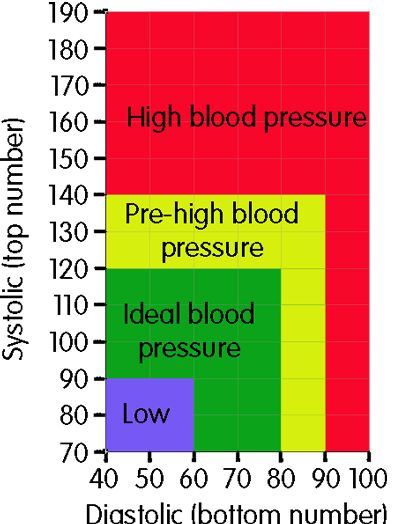You need a certain amount of pressure to get the blood around your body. The pressure of the blood flowing through your arteries changes at different times in the heartbeat cycle, pressure in your arteries will be highest when your heart is contracting (Systolic) and lowest as it relaxes (Diastolic) before it pumps again. This result of the blood pressure reading consists of two numbers or levels. They are shown as one number on top of the other and measured in mmHg, that is; millimetres of mercury. If your reading is 120/80mmHg, your personal trainer will likely say your blood pressure is “120 over 80”.

White coat syndrome
Often, your blood pressure might be higher when taken in a medical situation, referred to as white coat syndrome or effect due to the white coats traditionally worn by your doctor or nurse. Your blood pressure is fluid and constantly changes, emotional triggers can raise your blood pressure. In this case the effect of a medical professional or even your trainer taking your blood pressure.
Due to variations in blood pressure with white coat syndrome, you’ll normally have your blood pressure taken at least twice to find an average.
What is blood pressure?
Simply, blood pressure is the force that is applied to the walls of blood vessels when your heart pumps blood around the body, the higher this force, the higher your blood pressure and the more chance there is of developing a heart condition or suffering heart attacks and strokes, this is due to the extra pressure being put onto the vessels and the heart. High blood pressure is also known as hypertension and for most of us it is unlikely we would notice if we had high blood pressure or for that matter low blood pressure (hypotension). To find out, you need to get your blood pressure measured, either by a health professional or alternatively by buying your own machine and taking your own readings.
Blood Pressure Ranges and Normal Values
Your readings, typically are compared against normal values, the table below shows the readings for both systolic and diastolic and the ranges in which they fall, you don’t need both numbers to be high or low to be classified as suffering from hypertension (high) or hypotension (low) blood pressure.
You would be considered to have high blood pressure if either your top number was 140 or more or if your bottom number was 90 or more. Likewise, low blood pressure would be the case if either your top number was 90 or less or your bottom number was 60 or less.
| Range | Low | Ideal | Pre-High | High | Very High |
| Systolic | 70-90 | 91-120 | 121-140 | 141-160 | 161+ |
| Diastolic | 40-60 | 61-80 | 81-90 | 91-100 | 100+ |
Your blood pressure is an important health assessment as knowing if you have normal, high or low blood pressure can help us understand your current health status and remedial steps necessary to help you lead a healthy lifestyle.

Chart Credit: bloodpressure.org
Further reading
There are plenty of resources available for dealing with high and low blood pressure, please see the following links if you are concerned about or would like more info on high, low or normal blood pressure.
- What is high blood pressure – bloodpressuruk.org
- What is low blood pressure – bloodpressureuk.org
- What is normal blood pressure – bloodpressureuk.org

